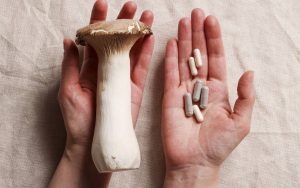Should You Try An Anti-Candida Diet?
An anti-candida diet has become popular in recent years as a way to improve health by reducing levels of candida in the body. Candida albicans is a type of yeast that lives naturally in the digestive tract and on the skin. When candida overgrows in the body, it can cause uncomfortable symptoms like chronic fatigue, digestive issues, and skin problems.
Proponents of the anti-candida diet claim that following it can restore balance to the body’s levels of yeast and bacteria. However, this restrictive diet is controversial, with many experts arguing there is insufficient evidence to support its use.
What Is Candida?
Candida is a fungus that aids digestion and nutrient absorption. It exists naturally in the mouth, throat, gut, and genital areas. When controlled and in balance with other microorganisms, candida causes no issues.
However, certain factors can lead to candida overgrowth, also known as candidiasis. These include:
- Antibiotic use – Antibiotics kill bad and good bacteria, allowing candida to flourish.
- High-sugar diet – Candida feeds on sugar, so excessive intake promotes growth.
- Weakened immunity – Diseases like HIV/AIDS and diabetes can impair immune function.
- High-stress levels – Chronic stress affects the immune system.
When candida overgrows, it breaks down the wall of the intestine, releasing byproducts into the bloodstream that can cause symptoms like:
- Digestive issues – Bloating, constipation, diarrhea, abdominal pain.
- Fatigue – Lack of energy, poor concentration, headaches.
- Skin problems – Acne, eczema, rashes, itching.
- Joint pain, muscle aches.
- Mood changes – Anxiety, depression, irritability.
- Recurring genital/urinary infections.
What Is The Anti-Candida Diet?
The anti-candida diet aims to starve candida and reduce its overgrowth. It emphasizes:
- Eliminating sugars – Candida’s preferred food source. This includes obvious sugars like soda, candy, juice, etc. but also hidden sugars in sauces, dressings, cereals, etc.
- Cutting carbs – Candida can also feed on starches and carbs. The diet restricts grains, bread, pasta, beans, etc.
- Limiting fruits – High-sugar fruits like bananas and grapes are avoided. Some lower-sugar fruits like berries are allowed in moderation.
- Excluding alcohol and vinegar – These can promote candida growth.
- Eating anti-fungal foods – Things like garlic, onions, olive oil, and coconut oil may inhibit candida. Probiotic foods help restore good gut bacteria.
- Taking anti-fungal supplements – Some supplements have anti-fungal properties, like caprylic acid, oregano oil, and berberine.
Does The Anti-Candida Diet Work?
Some people report improved symptoms after following the anti-candida diet. Reducing intake of sugars and refined carbs can starve candida while probiotics and anti-fungal foods/supplements may inhibit its growth.
However, critics argue there is a lack of rigorous clinical studies proving the diet’s effectiveness. They say there is no definitive evidence that candida overgrowth causes the host of symptoms attributed to it.
Regardless, limiting sugar and alcohol consumption, eating more vegetables and anti-inflammatory foods, and reducing processed/junk foods will generally promote good health. However, the strict restrictions of the anti-candida diet may not be necessary or realistic for most people.
Pros and Cons of the Anti-Candida Diet
Potential benefits of the anti-candida diet include:
- May reduce candida overgrowth.
- Can promote gut health with probiotic foods.
- Eliminates added sugars, processed foods, and alcohol.
- Encourages anti-inflammatory foods.
Potential downsides include:
- Very restrictive, cutting out major food groups.
- Risk of nutritional deficiencies over time.
- Lack of clinical evidence proving effectiveness.
- Difficult to adhere to long-term.
- Can trigger disordered eating in some people.
Who Might Benefit From The Diet?
The anti-candida diet is most likely to help individuals who have a clinically verified candida overgrowth that causes symptoms resistant to other treatments.
People with autoimmune diseases, leaky gut syndrome, or chronic yeast infections may also potentially benefit. Those experiencing digestive issues, fatigue, and skin problems from an unknown cause could try the diet under the supervision of a doctor.
Tips For Following The Anti-Candida Diet
If you wish to try the anti-candida diet, here are some tips:
- Work with a healthcare provider to verify candida overgrowth. Get tested for nutritional deficiencies.
- Ease into diet changes slowly over 2-4 weeks to allow your body to adjust. Drastic changes can cause die-off symptoms.
- Focus on getting good nutrition from non-starchy veggies, proteins, healthy fats, etc.
- Consider probiotic and anti-fungal supplements but introduce them slowly.
- Allow occasional higher sugar fruits/veggies like sweet potato and berries for fiber, and nutrients.
- Reintroduce restricted foods slowly after 2-4 months to see if symptoms recur.
- Stay hydrated, de-stress, exercise, and get enough sleep. Support your body’s natural detoxification systems.
Conclusion
The anti-candida diet is highly restrictive, and current evidence does not prove its effectiveness for candida overgrowth. For most people, basic dietary improvements and lifestyle changes will provide greater benefits with less risk than the anti-candemic diet. However, people with confirmed candida overgrowth may potentially see improvement in symptoms by carefully following this diet under medical supervision. Work with your doctor to determine if trying the anti-candida diet could be appropriate for your individual health needs.
Frequently Asked Questions
What foods are allowed on the anti-candida diet?
Allowed foods include non-starchy vegetables, lean proteins like chicken and fish, healthy fats like olive oil and avocado, low-sugar fruits like berries, probiotics, herbs, and anti-fungal supplements.
How long should you follow the anti-candida diet?
It usually takes 2 to 4 months to see improvement in candida overgrowth symptoms. The diet should not be followed long-term due to its restrictiveness.
Can you have cheat meals on the anti-candida diet?
It is best to fully adhere to the diet, as even small amounts of sugar and carbs can feed candida. After several months, higher-sugar foods can be reintroduced slowly.
What are the die-off symptoms from the anti-candida diet?
As candida starts dying off, toxins are released. This can temporarily cause symptoms like headache, nausea, fatigue, rashes, or mood changes. Staying hydrated can help.
Is the anti-candida diet good for weight loss?
The diet cuts out many high-calorie processed foods, sugars, and carbs. Some find they lose weight on the diet, but maintaining weight loss long-term may be difficult due to the diet’s restrictions.




